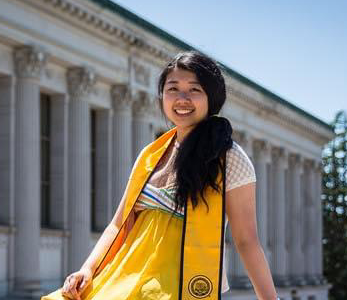
Materials Science & Engineering
The Department of Materials Science and Engineering traces its history to the founding of the University of California more than 150 years ago. Standing at the crossroads of modern scientific and engineering disciplines, materials science and engineering provides new materials and know-how to answer big questions in fields from information technology to healthcare to alternative energy and beyond. Current members of the department and alumni are leading efforts to change how we do computation, store energy, build safe structures and address pressing challenges in treating illness. Our research and teaching serve the needs of an increasingly technologically savvy and growing population, because behind everything you can use, there’s a materials scientist or engineer that helped make that material.
Did you know?
- 33% of MSE faculty are “Highly Cited Researchers,” making them among the world’s most influential in their fields. Approximately 0.1% of the world’s researchers across 21 research fields have earned this exclusive distinction.
- Over 80% of our faculty also are staff scientists at Lawrence Berkeley National Laboratory.
- MSE researchers are applying computational approaches to the discovery, design and development of the next generation of materials. The Materials Project (materialsproject.org), founded by members of the MSE faculty, has more than 260,000 registered users with more than 10,000 unique users daily.
per FTE faculty

Qian Zhang
B.S.’16, MSE

Mats that soak up pollution
Like toddlers and orchids, proteins can be fussy. Remove proteins from the cell, and they will likely break down. But materials scientists have figured out a way to keep certain proteins active outside of the cell, and have used this technology to create mats that soak up and trap chemical pollution. The team developed a synthetic polymer — called RHP — that provides what a protein would need to keep its structure and function outside of its native environment. The RHPs were then mixed with a protein called organophosphorus hydrolase to make fiber mats that successfully soaked up a toxic insecticide. This approach should be applicable to other enzymes and materials, opening the door to larger mats that could be used in places such as war zones or other contaminated sites.
Weaning the battery world
off of cobalt
Lithium batteries use more than 50% of all cobalt produced globally. This is because lithium ions are stored in cathodes, which are layered structures, and cobalt is crucial to maintaining this layered structure. Now, materials science engineers have discovered a way that cathodes can maintain a high energy density without these layers, a concept called disordered rock salts. The new study shows how manganese can work within this concept, which is a promising step away from cobalt dependence because manganese is a more affordable element.

